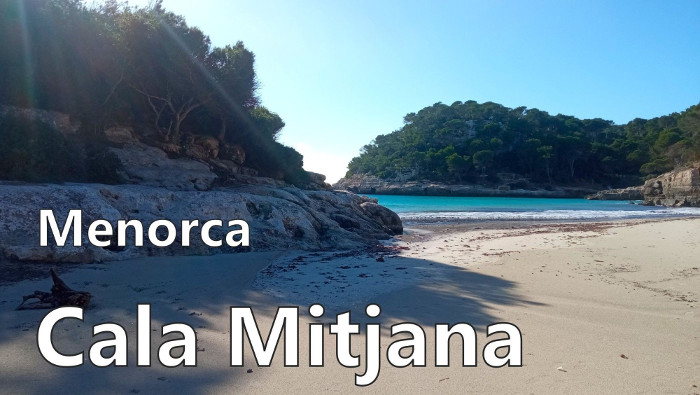Najważniejsze rzeczy do zobaczenia i miejsca historyczne na Minorce

The tapas area in Mahón’s Fish Market building, nestled beside the bustling Port of Mahón, is a vibrant showcase of Menorca’s culinary soul. Housed in a historic maritime building, this lively market space buzzes with stalls serving fresh seafood tapas straight from the day’s catch—think crispy calamari, garlicky shrimp, and the island’s iconic lobster stew (*caldereta*). Local artisans offer creamy Mahón cheese, earthy sobrasada sausage, and crisp white wines from nearby vineyards. With the harbor’s bobbing boats as your backdrop, this is where locals and visitors mingle over shared plates, savoring the island’s flavors in a convivial atmosphere that perfectly blends tradition with seaside charm. A must for food lovers....

Albufera d’es Grau: Menorca’s Natural Sanctuary. Nestled within a UNESCO Biosphere Reserve, Albufera d’es Grau is Menorca’s most precious wetland. This shimmering coastal lagoon fringed with dunes and pine forests serves as a vital habitat for flamingos, ospreys, and rare aquatic species. Visitors can walk well-marked trails to hidden birdwatching hides, swim in the adjacent Es Grau beach’s crystal-clear shallows and learn about conservation at the eco-interpretation center The perfect spot for bird enthusiasts, families and nature photographers. Pro tip: Rent bikes in Mahón for a scenic 30-min ride to this ecological wonder. A breathtaking showcase of Menorca’s commitment to preserving nature’s delicate balance....

Punta Nati Cape in Menorca. Punta Nati is a rugged and windswept cape in northwestern Menorca, offering dramatic coastal scenery with jagged cliffs, rocky landscapes, and sweeping views of the Mediterranean. Less crowded than other tourist spots, it’s an ideal place for solitude, stunning sunsets, and scenic walks. The Punta Nati lighthouse, built in 1913, stands as a solitary sentinel over this wild terrain. Nearby, old military bunkers from the Spanish Civil War add a touch of history to the raw natural beauty. Perfect for hiking and photography, Punta Nati captures the untamed spirit of Menorca—a must-visit for nature lovers and those seeking off-the-beaten-path adventures....

Cala San Esteban Discover one of Menorca’s best-kept secrets at Cala San Esteban, where untouched nature meets breathtaking beauty. Nestled between soaring limestone cliffs on the island’s northern coast, this remote pebble-and-sand beach dazzles with its electric blue waters - some of the clearest in the Balearics. Part of Menorca’s UNESCO Biosphere Reserve, the cove offers superb snorkeling among rocky coves teeming with marine life. Accessed only by boat or a 30-minute hike through fragrant pine forests, you’ll often have this paradise almost to yourself. The lack of facilities preserves its wild charm - bring your own shade and supplies for a perfect day in this Mediterranean hideaway....

Cape Favaritx, Menorca. Cape Favaritx, in northeastern Menorca, is a striking natural wonder known for its dramatic, moon-like landscape. The jagged black slate rocks, polished by wind and waves, create a surreal contrast with the turquoise waters of the Mediterranean. A solitary lighthouse, built in 1922, stands as a silent guardian over this wild and windswept coastline. Part of the S’Albufera des Grau Natural Park, the area offers scenic hiking trails, secluded coves, and breathtaking sunsets. Its raw, untamed beauty makes it a perfect escape for nature lovers and photographers. A visit to Favaritx feels like stepping into another world—peaceful, rugged, and unforgettable....

Cape Cavalleria, Menorca. Perched on Menorca’s rugged northern coast, Cape Cavalleria is a breathtaking natural landmark with dramatic red cliffs, sweeping sea views, and a historic 19th-century lighthouse. This untouched paradise offers some of the island’s most stunning sunsets and secluded golden beaches, like Playa de Cavallería, where crystal-clear waters invite a refreshing swim. Hiking trails wind along the cliffs, revealing ancient talayotic ruins and panoramic vistas of the Mediterranean. A perfect spot for nature lovers, photographers, and history enthusiasts, Cape Cavalleria remains one of Menorca’s wildest and most scenic escapes—ideal for those seeking tranquility and unspoiled beauty....

Spis treści
- Informacje ogólne
- Katedra Ciutadella
- Najwyższy punkt wyspy w pobliżu Mercadal
- Stolica Minorki
- Główny kościół Alaior
- Prehistoryczny pomnik nagrobny w pobliżu Ciutadelli
- Świątynia paleochrześcijańska w Son Bou
- Latarnia morska na północy Minorki
- Największa prehistoryczna osada na Minorce
- Historyczne centrum starej stolicy
- Największa taula na świecie
- Interaktywna mapa
Podsumowanie treści
Lista jednych z najlepszych miejsc o znaczeniu historycznym, które można odwiedzić na Minorce.
Ta lista 10 najlepszych historycznych i prehistorycznych miejsc, które możesz odwiedzić podczas wakacji na tej wyspie Balearów, zawiera informacje ogólne. Należy pamiętać, że ze względu na ogromną liczbę historycznych i prehistorycznych miejsc na Minorce, ta lista jest tylko wyborem miejsc wybranych ze względu na ich piękno, z różnych okresów, do których należą, i ze względu na położenie na różnych obszarach wyspy.
Katedra Ciutadella

Największa i najważniejsza świątynia na Minorce znajduje się w sercu religijnej stolicy wyspy.
Jest to gotycki budynek sakralny z początku XIV wieku, zbudowany na pozostałościach starego meczetu, do którego kilka reform dodało sekcje barokowe i neoklasyczne.
Monte Toro
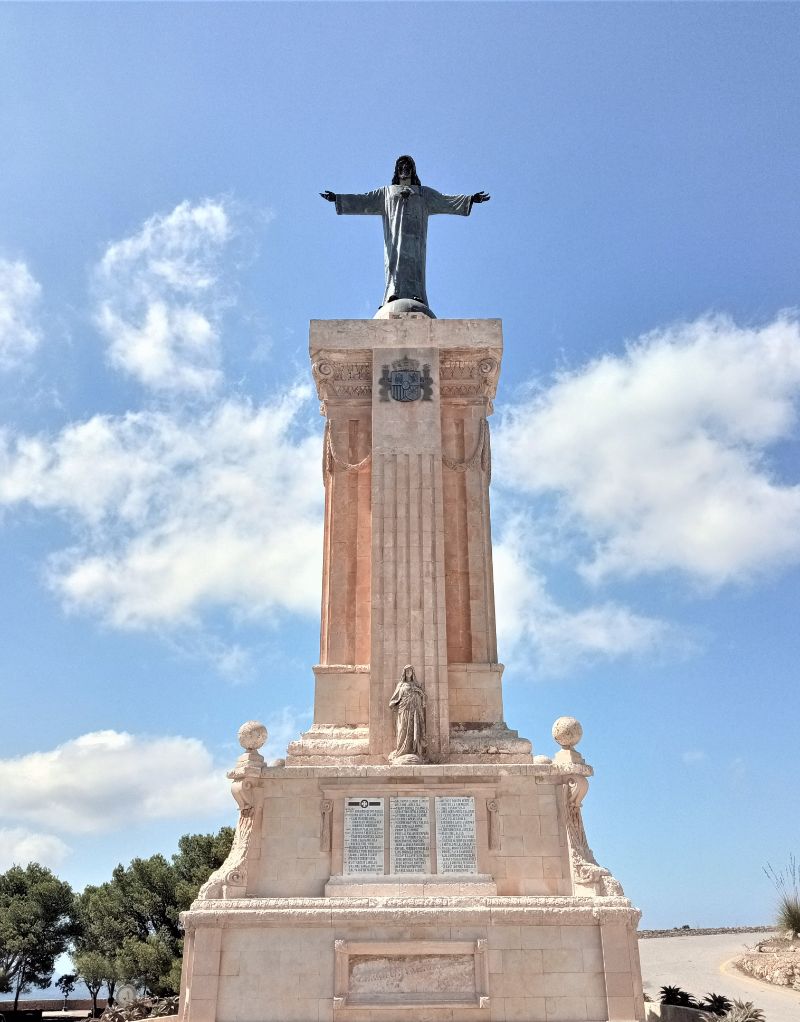
Zespół architektoniczny Monte Toro, położony na najwyższym punkcie na Minorce, jest jednym z najczęściej odwiedzanych miejsc na wyspie.
Co jest na Monte toro
Na jego szczycie, należącym do Kościoła katolickiego, znajdujemy:
- Świątynie z końca XIII wieku (choć wielokrotnie przebudowywana i odnawiana)
- Klasztor w użyciu
- Karczmę (czynna tylko w sezonie letnim)
- Sklep z pamiątkami
- Wieże strażnicza z XVI wieku
- Fantastyczne panoramiczne widoki Minorki
Mahón, stolica Minorki
Obecna stolica Minorki to miasto liczące około 30 000 mieszkańców, którego architektura odzwierciedla intensywnie morską przeszłość tego miejsca.
Odwiedzone przez Magón Barca, założone przez Rzymian i zamieszkałe przez Arabów, Żydów i chrześcijan z różnych narodów, miasto Mahón jest odzwierciedleniem wielkości swojego niezmierzonego portu b>.
Wskazówki
- Wybierz się na wycieczkę łodzią po Porcie Mahón
- Odwiedź targ Claustre del Carme
- Odwiedź obszar tapas starego targu rybnego
Santa Eulalia

Pomnikowy kościół z XVII wieku w centrum miasta Alaior, w sercu Minorki.
Ten barokowy kościół wyróżnia się spektakularną architekturą i różnorodnością wrażeń, które wywołuje wycieczka z przewodnikiem.
Naveta des Tudons
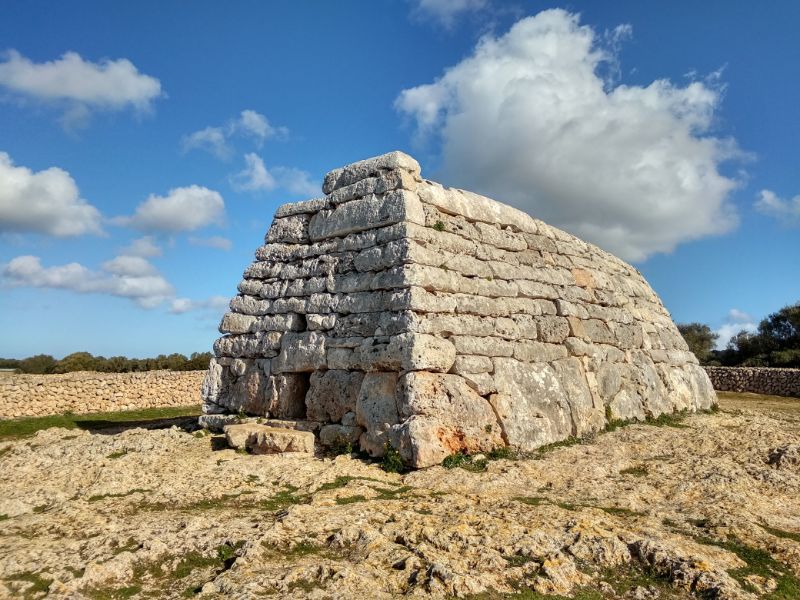
Emblematowy prehistoryczny pomnik pogrzebowy kultury talayoskiej na Minorce.
Ten budynek marynarki wojennej z 750 r. p.n.e. to cud prehistorycznej architektury Minorki.
Wczesnochrześcijańska bazylika Son Bou
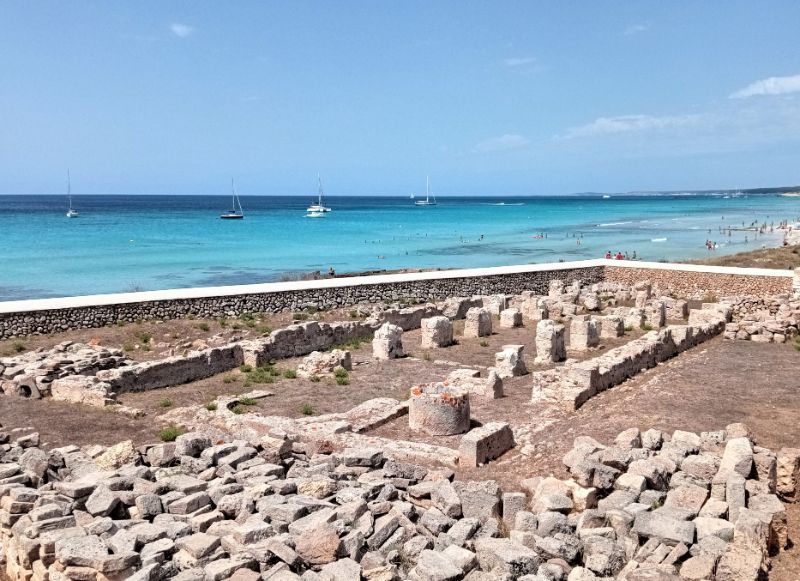
Jest to jedna z 5 paleochrześcijańskich bazylik z początku V wieku znalezionych na Minorce do tej pory.
Z tej świątyni rzymsko-chrześcijańskiej pozostała podłoga i niektóre kolumny. Jednak budowa tego typu kościoła tak blisko morza jest enigmatyczna.
Cabo de Cavallería

Cabo de Cavallería to cud geologiczny, który ostatecznie jest najbardziej wysuniętym na północ miejscem na Minorce.
Jej najstarsza na wyspie latarnia morska, plaże, widoki i pozostałości budowli wojskowych z czasów wojny secesyjnej są wielką atrakcją wyjątkowej przestrzeni.
Wieża Galmés
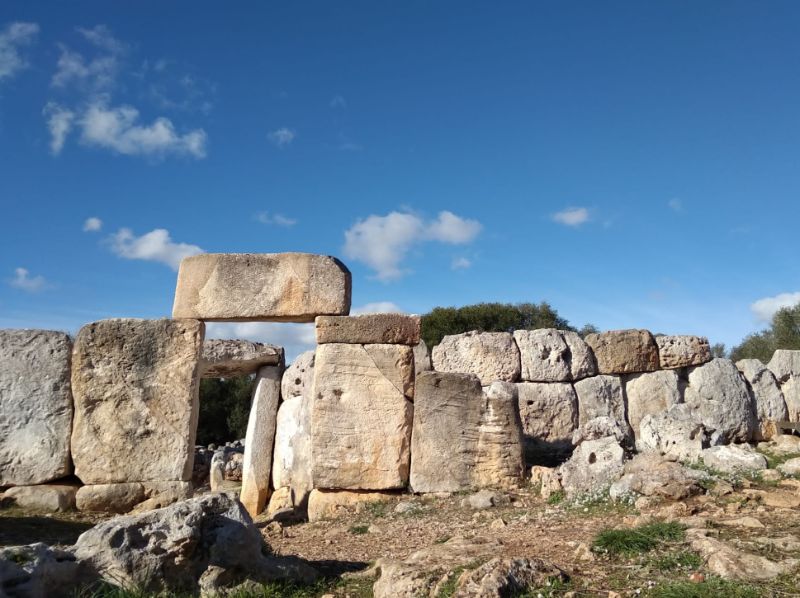
To największa prehistoryczna osada na Minorce.
Na południe od miasta Alaior, w tej wspaniałej wiosce talayockiej znajdują się wszystkie elementy architektoniczne tej osobliwej prehistorycznej kultury.
Historyczne centrum Ciutadella de Menorca
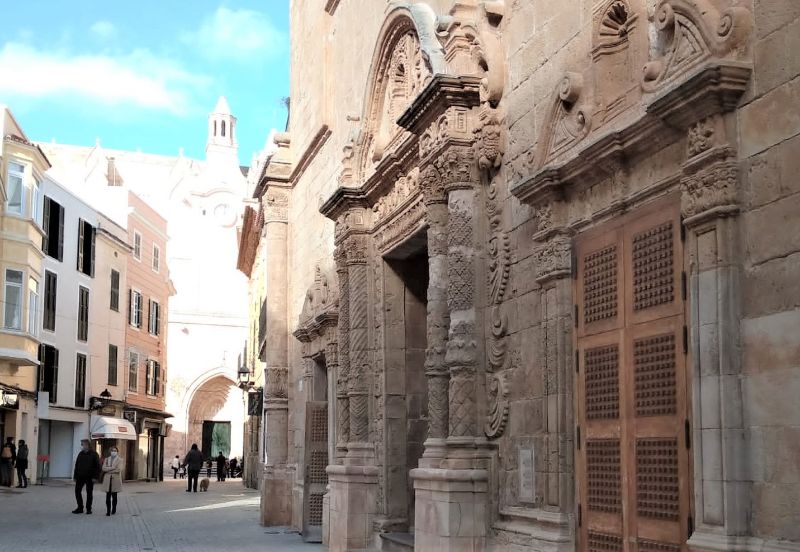
Ze względu na średniowieczne uliczki, okazałe pałace i mnogość kościołów jest to dla wielu najpiękniejsze miasto na Minorce.
Wskazówki
- Odwiedź katedrę + klasztor San Agustín
- Wypij drinka lub tapas na starym rynku
- Odwiedź port i promenadę do Platja Gran
Trepucó
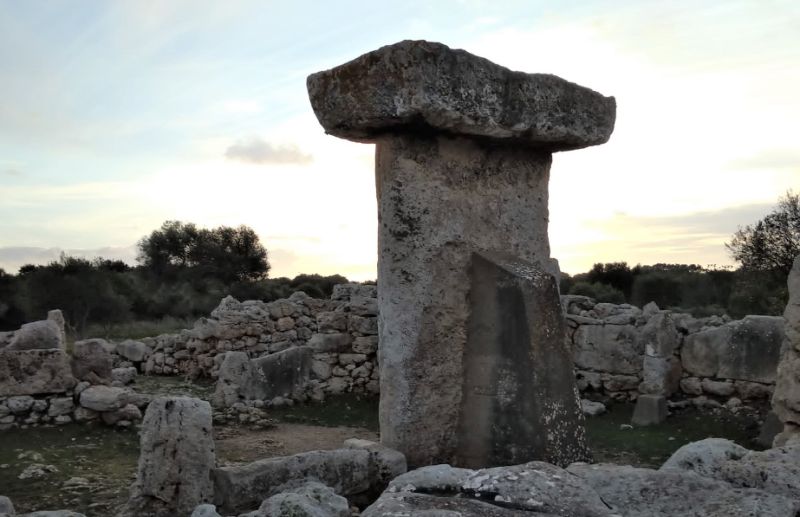
Była to największa osada talayocka na Minorce, chociaż dziś widać tylko część tego, co było widoczne.
Wyróżnia się posiadaniem największej Taula i Talayot na Minorce.
Jak dotrzeć do tych historycznych miejsc na Minorce
